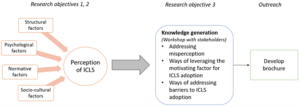Project Overview
Commodities
- Agronomic: annual ryegrass, barley, buckwheat, clovers, cotton, hay, oats, peanuts, rye
- Animals: bovine
Practices
- Animal Production: feed/forage, grazing management, rangeland/pasture management
- Crop Production: conservation tillage, cover crops, cropping systems, crop rotation, no-till, nutrient cycling, row covers (for season extension)
- Education and Training: extension, participatory research
- Production Systems: integrated crop and livestock systems
Proposal abstract:
Half of all anthropogenic methane emissions and around three-quarters of anthropogenic nitrous oxide are from the global food systems. Moreover, of the 14% of total CO2 emissions from land use, agriculture is responsible for 10% of emissions. Sustainable agricultural practices (SAP) are crucial for reducing emissions and achieving net-negative production. Integrated crop-livestock systems (ICLS) are a form of SAP where land is synergistically used by plants and animals on spatial and temporal scales. Implementing ICLS has several benefits, including reducing nitrate leaching, increasing land productivity, increasing production stability, enhancing soil chemical and biological properties, and decreasing greenhouse gas emissions. Additionally, ICLS promotes economic resilience for farmers through the diversification of income. Despite its benefits, the adoption of ICLS is very low in the United States. Although many barriers to adoption have been identified globally, few studies directly examine barriers to ICLS adoption in the Southeastern United States. Therefore, it is unknown which of these challenges, or other yet unidentified challenges, are limiting adoption. Marginalized farmers' participation in federal conservation programs is found to be less than that of other farmers, indicating barriers to engaging in sustainable agricultural practices. This study employs a participatory modeling approach, to understand the perceptions of White and marginalized farmers about ICLS, and the differences between the two. Further, strategies to address misperceptions, and barriers will be developed through a collaborative knowledge-building process.
Project objectives from proposal:
The proposed research aims to understand the perceptions of farmers about ICLS through a participatory mental modeling process, co-create knowledge for addressing the misperceptions and barriers, and develop outreach materials outlining the results of the study (Figure 1).
Figure 1: Graphical representation of the research process
The specific objectives of the project are:
- To explore farmers’ perceptions of ICLS in the Southeastern United States.
Mental modeling, a participatory mixed methods approach, will be used to identify perceptions of farmers, their perceived barriers, and motivations about ICLS. During the data collection process, prompts will be used to encourage farmers to share their perceptions related to characteristics of ICLS, such as relative advantage, complexity, compatibility, observability, and trialability (Roger, 2003); their values, i.e., egoistic, altruistic, and biospheric (Stern, 2000); and subjective norms regarding ICLS (Ajzen, 1991). Then, participants will be asked to create their individual cognitive map to represent their mental model for ICLS. During data analysis, the researcher will develop a composite/group cognitive map of the participants, as shown in Figure 2.
Figure 2. Composite maps of mental models of participants who self-identify as producers (top) and environmentalists (bottom) (Hundemer and Monroe, 2020)
- To explore the effect of sociocultural factors on the perception of ICLS among farmers in the Southeastern United States.
Two separate composite cognitive maps will be developed for White and marginalized farmers to identify differences in perceptions, barriers, and motivations for ICLS among the two groups. During data analysis, researchers will use cluster analysis, to do so.
- Develop strategies for increasing the adoption of ICLS through a collaborative knowledge generation process.
After analyzing the data from objectives 1 and 2, a workshop will be conducted with farmers, extension agents, researchers, and other agricultural stakeholders to discuss potential strategies and implementation pathways for addressing the misperceptions and barriers and leveraging the motivating factors regarding ICLS for its increased adoption.

